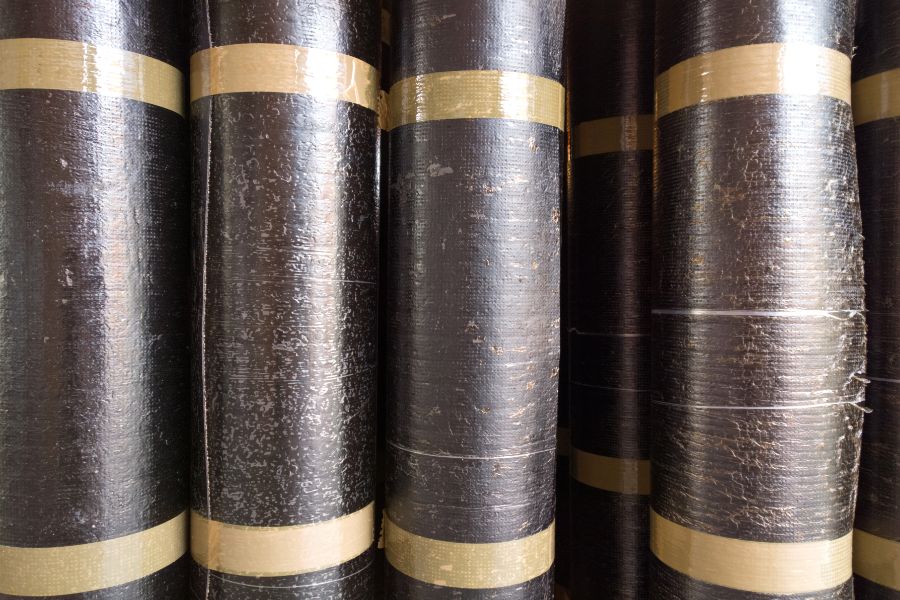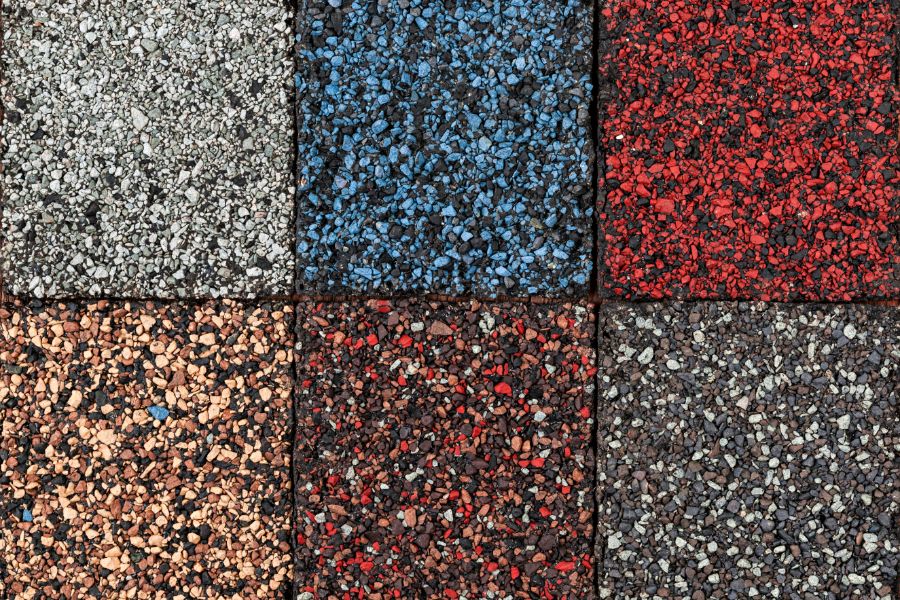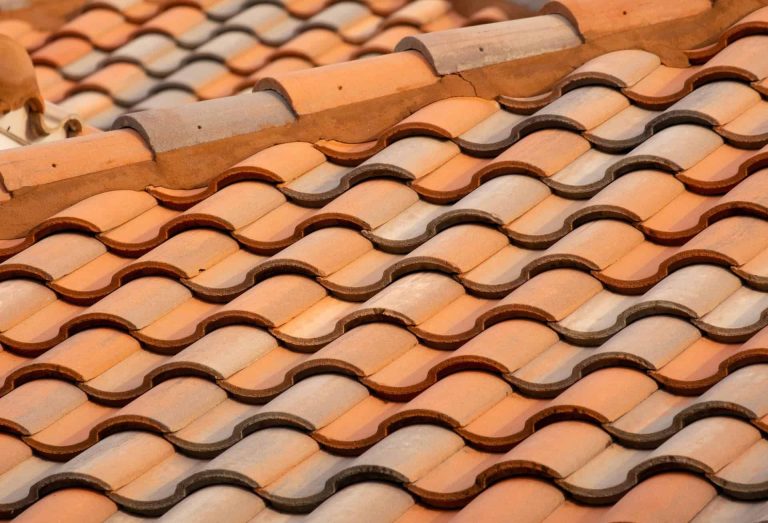The Impact of Your Roof on Your Home’s Energy Efficiency
Your roof plays a significant role in your home’s energy efficiency. High-quality, light-colored materials can cool your house by reflecting sunlight, while darker roofs absorb heat, increasing cooling costs. Proper insulation minimizes heat transfer, cutting down on energy bills, especially in winter. Effective ventilation prevents moisture build-up and ice dams and helps maintain indoor comfort. Finally, an excellent installation by certified pros guarantees your roof performs at its best, saving you money in the long run. Curious about how to maximize these energy-saving benefits even more? Stay with us for deeper insights.
Roofing Materials
When selecting roofing materials, it’s important to think about how they impact your home’s energy efficiency. The choice of roofing material can greatly affect your energy consumption and overall comfort. Opting for light-colored roofs or reflective materials can make a world of difference. Light-colored roofs reflect more sunlight, reducing heat absorption and keeping your home cooler. This means your air conditioning system won’t have to work as hard, which can lower your energy bills.
On the other hand, dark roofs absorb heat, which can increase the need for cooling and raise energy consumption. Reflective roofing materials, which come in various materials and colors, can also contribute to energy savings. These materials are designed to reflect more sunlight and absorb less heat. When you’re choosing roofing materials, it’s essential to think not just about the aesthetic appeal but also how they contribute to energy-efficient roofing.
Roof Color
Choosing the proper roof color can greatly impact your home’s energy efficiency and comfort. Your choice of roof color plays an essential role in temperature regulation, directly affecting your indoor temperatures and energy bills. Light-colored roofs and dark-colored roofs have different impacts, depending on your climate and energy needs.
Light-colored roofs reflect sunlight, which can help keep your home cooler. This reduces the need for excessive cooling during hot summer months. Here are some benefits of light-colored roofs:
- Sunlight reflection: Keeps the home cooler by reflecting more sunlight.
- Reduced cooling costs: Lowers the need for air conditioning.
- Consistent indoor temperatures: Helps maintain a stable temperature inside.
- Energy efficiency: Markedly lowers energy consumption in hot climates.
On the other hand, dark-colored roofs absorb more light and heat, which can be advantageous in cooler climates. They help increase indoor temperatures, making your home warmer during the winter and thereby reducing heating costs. However, in hotter climates, dark roofs can make your home much warmer, raising cooling expenses.

Insulation Efficiency
After selecting the best roof color for your climate, the next step in enhancing your home’s energy efficiency is ensuring proper insulation. Proper insulation is essential for maintaining an energy-efficient home, as it greatly reduces heat loss during the winter and minimizes heat transfer in the summer. By doing so, you can keep your home warm in the colder months and cool during the hot season, creating a comfortable environment year-round.
Insulation efficiency directly impacts your energy costs. With adequate insulation, you can cut down on energy expenses by up to 30%, making a noticeable difference in your utility bills. In fact, well-insulated roofs can prevent around 25% of heat loss during winter months, which can translate into substantial energy savings over time.
Investing in quality insulation not only lowers your energy costs but also contributes to the overall impact your roof has on your home’s energy efficiency. By ensuring proper insulation, you are taking a significant step towards maintaining efficiency and achieving long-term energy savings. Remember, a well-insulated roof is essential for keeping your home comfortable and safe, no matter the season.
Ventilation Effectiveness
Effective ventilation is essential for maintaining your home’s energy efficiency and comfort. By guaranteeing your attic is properly ventilated, you can prevent a host of issues that could compromise your home’s safety and efficiency.
Here are some key benefits of effective ventilation:
- Reduces Energy Costs: Proper ventilation helps expel hot air from the attic, reducing the strain on your air conditioning system and lowering energy bills.
- Prevents Moisture Build-Up: Good ventilation prevents moisture accumulation, which is vital for mold prevention and maintaining the structural integrity of your roof.
- Prevents Ice Dams: Adequate ventilation helps regulate the temperature in the attic, preventing ice dams from forming in winter and protecting your roof’s integrity.
- Improves Indoor Comfort: By keeping the attic temperature stable, ventilation systems contribute to a more comfortable indoor environment year-round.
Ventilation works hand-in-hand with attic insulation to improve energy efficiency. It ensures that your attic stays dry and cool, which can greatly reduce energy costs and enhance indoor comfort. Moreover, it prolongs the life of your roof and its materials, safeguarding your investment. Remember, a well-ventilated attic is key to preventing moisture build-up, ice dams, and other issues that can lead to costly repairs and health hazards.
Installation Quality
Making sure your roof is installed correctly is vital for maximizing your home’s energy efficiency and saving on long-term costs. Installation quality plays a significant role in how well your roof performs. Poor installation can lead to increased heating and cooling costs by up to 20%. This is because gaps, leaks, or improper sealing can let conditioned air escape and allow external air to seep in, making your HVAC system work harder.
Hiring certified contractors for your roofing project is essential. Inexperienced contractors may cut corners or make mistakes that compromise the integrity of your roof. Certified professionals, like GAF Master Elite contractors, are trained to provide quality installations, ensuring your roof is properly installed. This correct roof installation provides long-lasting energy efficiency and prevents common issues that arise from poor installation.
Proper installation is more than just laying down shingles; it involves meticulous attention to every detail to ensure a perfect fit. By opting for certified contractors, you’re investing in a roof that will help you maintain a comfortable home environment while keeping energy costs low. Don’t underestimate the impact of installation quality on your home’s overall energy efficiency.
Energy-Saving Benefits
By choosing a high-quality installation, you’re setting the stage to reap significant energy-saving benefits from your roof. A well-installed roof can make a noticeable difference in your home’s energy efficiency and your wallet.
Reflective roofing materials, for instance, can lower roof temperatures by up to 50 degrees Fahrenheit. This reduces the need for air conditioning, helping you save on energy costs. Proper insulation is another key factor. It maintains a consistent indoor temperature, which reduces the strain on your heating and cooling systems. This translates to lower utility bills and long-term savings.
Ventilation helps in several ways, too. It prevents moisture buildup and mold growth, which not only safeguards your home but also improves indoor air quality. Here are some benefits to take into account:
- Reflective roofing materials: Lower roof temperatures and reduce cooling needs.
- Proper insulation: Maintains indoor temperature and reduces heating and cooling costs.
- Ventilation: Prevents moisture buildup and improves air quality.
- Energy-efficient roofing materials: Lead to long-term savings on utility bills.








